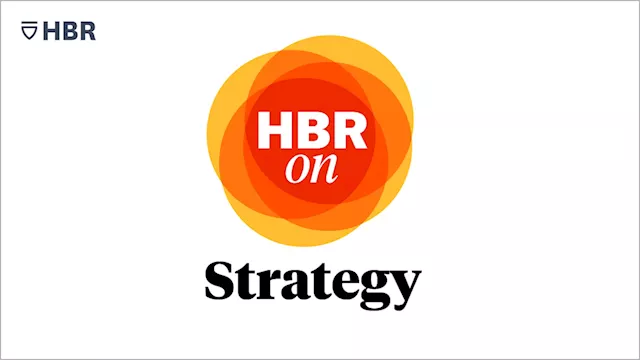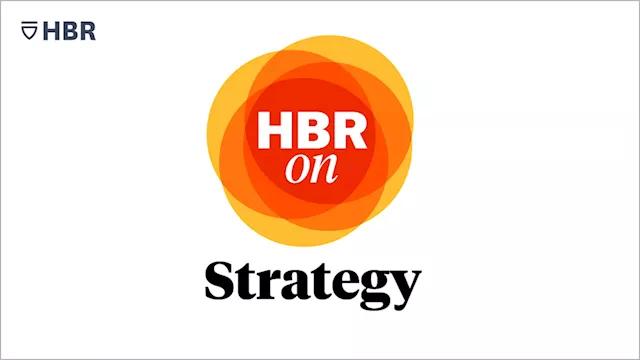Zook was co-head of Bain’s Global Strategy practice for 20 years. He’s also a best-selling business author.
. He is here with us today to talk about arguably the number one challenge facing executives. Where to find new sources of growth? Chris Zook, thank you for joining us.MELINDA MERINO: So, let’s start with an alarming statistic. In your book, you tell us that in the next decade, two of every three companies will have to redefine their core business in order to grow. That’s pretty scary.
MELINDA MERINO: So, fundamental threats to most core businesses will continue to proliferate. And most companies, you say in the book, will only see the threat when it’s already too late.
And Unstoppable is about the situation that you just highlighted, when your growth formula of the past comes to a limit. We found there are three main situations, which can signal that your growth formula of the past is reaching a limit. It’s possible for all of them to coexist in a company, such as happened in the photography situation. For example, with Kodak. Or one at a time.
MELINDA MERINO: Those are three really big warning signals that you’ve given us. And the overall dilemma is, how do you know whether your core is at full potential or not? These are very difficult questions for executives to have to grapple with. Could you give us an example of how a company you’ve studied saw the need to redefine their core? And then how they did it?
What De Beers did in a short period of time was really quite remarkable. They shifted to this demand based strategy. They increased their advertising for diamonds from 1% of their revenues to 10% of their revenues. The $60 billion diamond business is now growing, where it was actually in decline. They also began exploring retail stores. They invested in technology and methods to brand diamonds, thinking if you can brand water, surely you can brand diamonds.
We found there were basically three main types of hidden assets that were central in 90% of the successful cases of redefining your core. One are we called, customer assets. This could be a brand as in the case we just talked about. It could be a segment of extremely great strength, buried in your customer base that you can reform around.
The third type of hidden asset are capabilities. Capability assets. Arguably, you could even say that the rejuvenation of Apple was based upon identifying capabilities that could be repurposed for a new market, music, and that were hidden assets in terms of software knowledge and design, and knowledge of small disk drives, whose potential had been hidden but then discovered and realized.
Second method would be to look for a big bang transformation move or possibly an acquisition. It’s interesting to look back on how heralded the combination of AOL and Time Warner was at the time, but that has obviously turned out to be a disappointment for shareholders and ultimately a value destroying act. And that is often the case. We find the odds of success of big bang transformations are about one in ten. It’s difficult to unwrap or untie or cut through the Gordian Knot in one single move.
MELINDA MERINO: So, what is the first thing a CEO should do, if she believes her company’s growth strategy has reached its limit?
المملكة العربية السعودية أحدث الأخبار, المملكة العربية السعودية عناوين
Similar News:يمكنك أيضًا قراءة قصص إخبارية مشابهة لهذه التي قمنا بجمعها من مصادر إخبارية أخرى.
 Redefining Your Core Business for Growth: A Conversation with Chris ZookIn this episode of HBR On Strategy, Chris Zook, author of 'Unstoppable,' discusses the alarming trend of companies needing to redefine their core business for growth. Zook shares three warning signs indicating a need for transformation and explains how to uncover hidden assets within your company.
Redefining Your Core Business for Growth: A Conversation with Chris ZookIn this episode of HBR On Strategy, Chris Zook, author of 'Unstoppable,' discusses the alarming trend of companies needing to redefine their core business for growth. Zook shares three warning signs indicating a need for transformation and explains how to uncover hidden assets within your company.
اقرأ أكثر »
 Redefining Your Core Business for Growth: Insights From Chris ZookChris Zook, a partner at Bain & Company and best-selling author, discusses the importance of redefining your core business to achieve sustainable growth. He shares three warning signs indicating when this transformation is necessary and offers strategies for uncovering 'hidden assets' within your company.
Redefining Your Core Business for Growth: Insights From Chris ZookChris Zook, a partner at Bain & Company and best-selling author, discusses the importance of redefining your core business to achieve sustainable growth. He shares three warning signs indicating when this transformation is necessary and offers strategies for uncovering 'hidden assets' within your company.
اقرأ أكثر »
